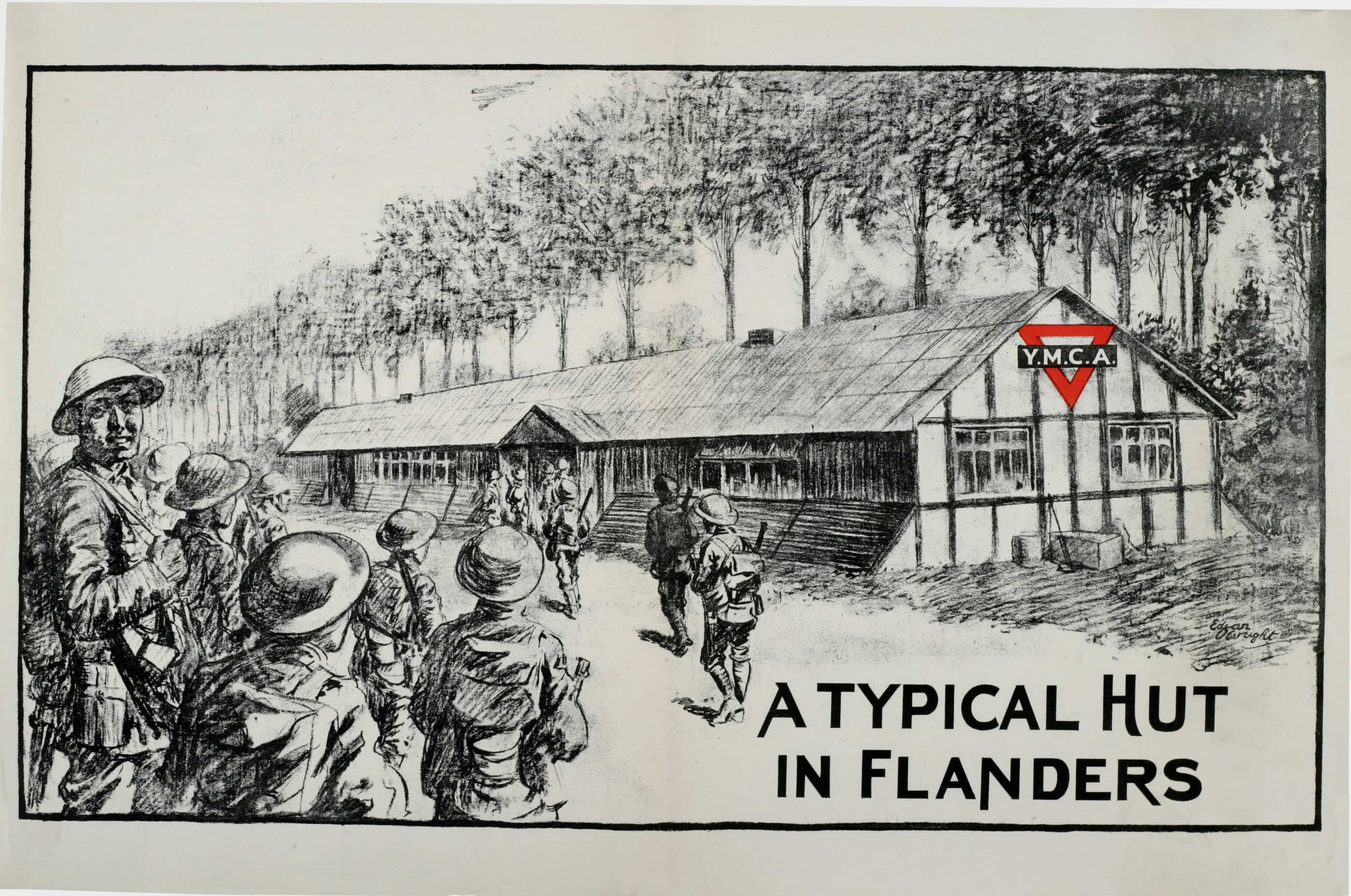'Work on Which the Sun Never Sets': Mapping the YMCA Across the World
Welcome to my project mapping the YMCA! My aim is to show where the YMCA operated during the First World War by creating one map showing as many of their huts, hostels and theatres across the world as possible.
The YMCA ran over 4,000 establishments during the war, ranging from their pre-war urban centres in Britain, to dug-outs and marquees behind the trenches of the Western Front, and across the deserts of the Middle East.
Known as the hut programme (although the physical space could vary widely), the YMCA provided centres for refreshment, entertainment and fellowship during the war. Your can read my introduction to their services here. Their work largely focussed on supporting servicemen, but there was also huts for munition workers - both male and female.

It was hoped by the YMCA that soldiers would contract the "hut habit" throughout the war. From first encountering their work in the training camps, the Sign of the Red Triangle would then follow them to the base camps, rest towns and even the reserve lines of the trenches. Huts at train stations were also common, offering their services wherever soldiers were stationed or had time to spare. From camps such as Etaples, to the dangers of the Gallipoli beaches, the YMCA's work stretched out across the world in an endless network of support for soldiers.
In creating this map, I have tried to be as accurate as possible. In some cases this has been straightforward: for instance, the London huts often had their street address listed in The Times, and for a number of base towns I have been able to access town plans which accurately map the YMCA's locations.
In other places, especially those within the UK, I've relied on local history research, itself locating premises through local press reports and individual narratives. However, for the great majority of huts I've only been able to narrow locations down to 'approximate' or 'rough' positions, often having to rely on anecdotal clues or suggestions given by users of the huts. Some of these have given me a pretty good indication of where the hut was, yet with others the likely locations are far more vague. Read about my process for locating the huts here.

In the Ypres Salient in late 1917 there were more than 80 YMCA huts. I have so far only been able to plot less than half of these. Some, like Reninghelst, were widely reported on, yet their exact location can still be hard to pinpoint. Similarly, at Etaples there were 33 huts. Many of these had locations too vague to include, with the camps they were located in not plotted on any of the town maps I have been able to access.
Hardest of all has been the plotting of those YMCAs from the Palestine campaign. Those that accompanied troops across Sinai were temporary in nature, often just a portable marquee, quickly erected somewhere in the desert. Even those that were more permanent are hard to place in the vast expanse of land.

Where possible, I have noted the source through which I've found the huts. I'm aware that some of these will have given inaccurate information, yet I hope it is clear how I have managed to plot them, and also where available, I have included links to images of the huts.
So, I hope you find the map interesting and potentially useful to your own First World War research. So far including 400 huts across 26 countries and 5 continents, I hope most of all it gives an indication of the breadth and scope of the YMCA's work, which endeavoured to be a continuous support to the British Army, wherever they served.
Access the map here!
Kathryn




No comments: